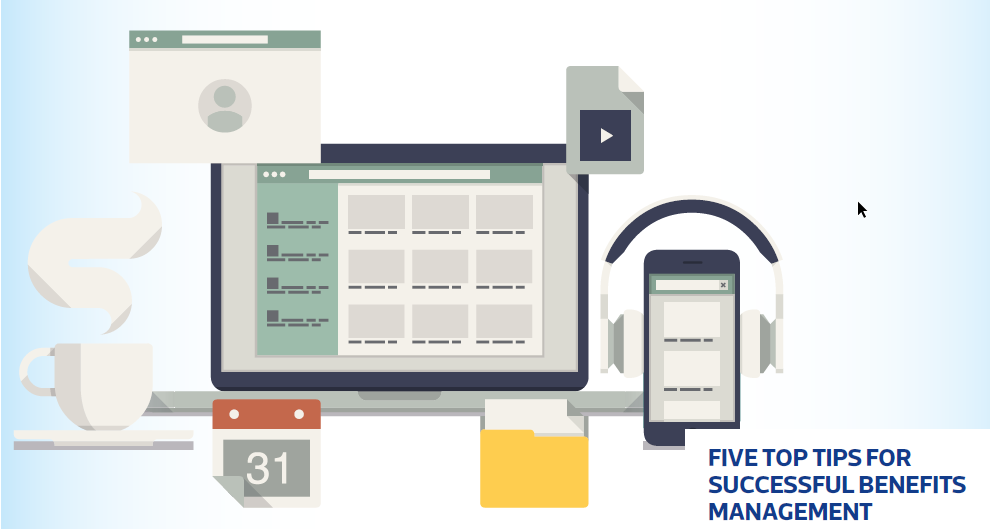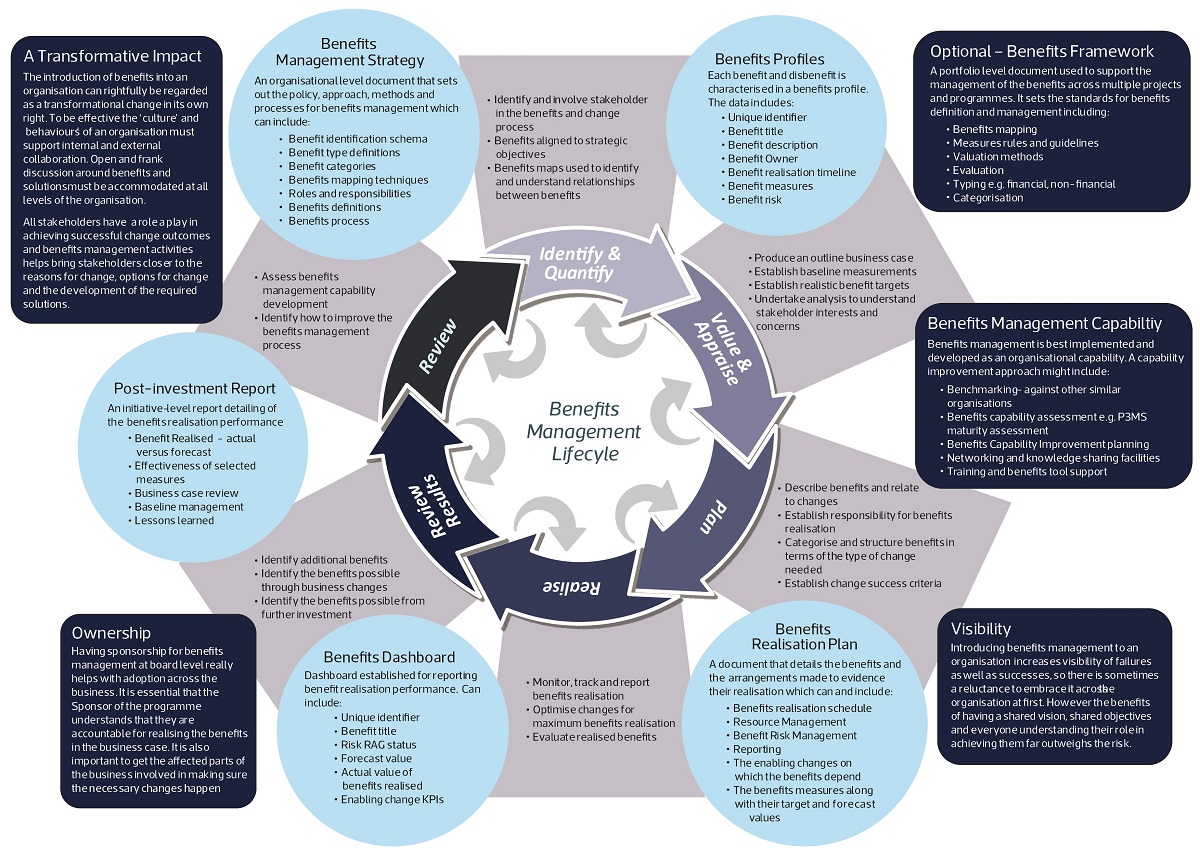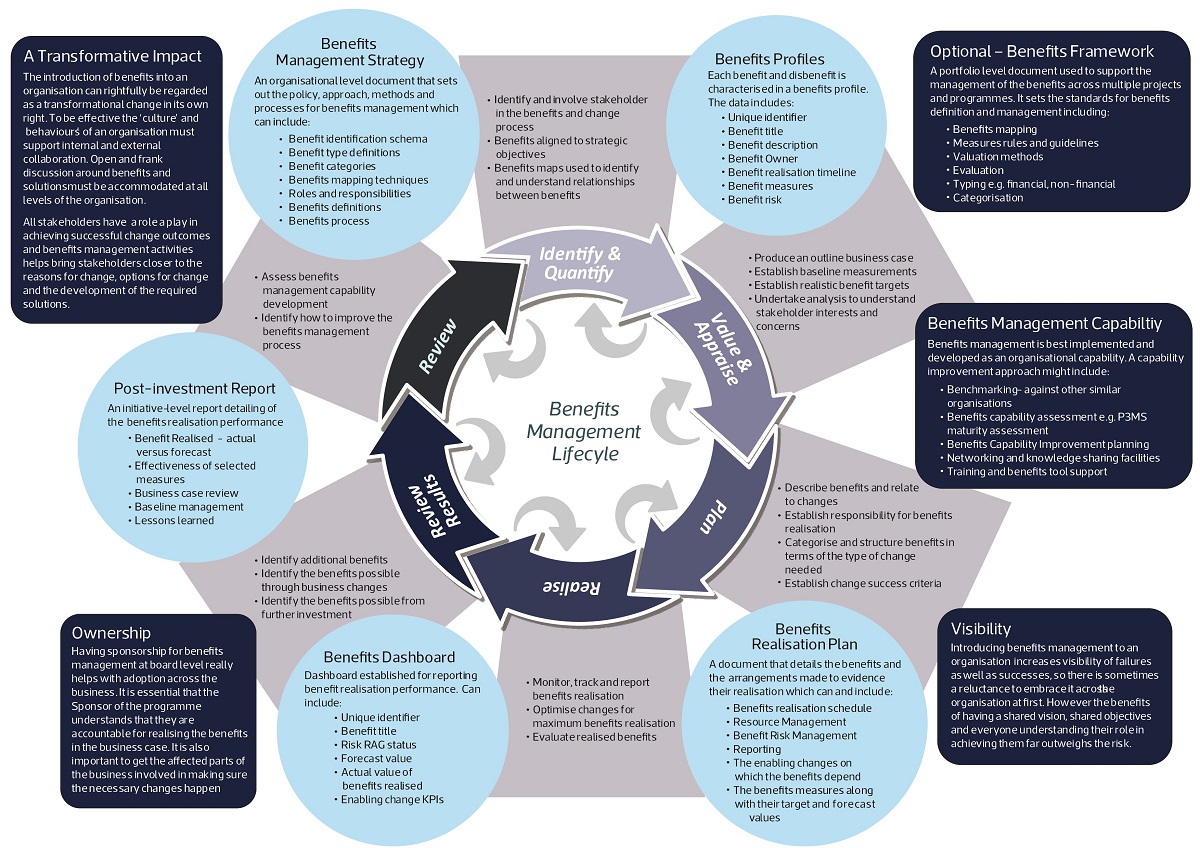Top tips for delivering value for money from investments in change
The purpose of this blog is to provide some practical guidance on how to implement benefits management; a few simple measures will enable organisations to focus on realising benefits from their investments in change.

Moving from common sense to common practice
When discussing benefits management, we often hear managers say that it is simply a matter of applying common sense and that the purpose of any project is obvious - to deliver some form of benefit. However, adopting a proactive approach to organising and managing the benefits of projects and programmes [beyond simply jumping over organisational hurdles to get an investment approved] is still not common practice.
Consequently, projects continue to fall short on delivering the promised benefits. A case in point - the National Programme for IT in the NHS [NPfIT], the world’s largest civilian IT project which ran for ten years and cost more than £12billion. It was a programme with laudable goals, however, according to a report published by the National Audit Office report in 2013, NPfIT realised fewer than a third of forecast benefits!
Adopting meaningful benefits management
Given the eye-watering sums of money involved, and the scale of organisational and societal impact, it should not be surprising, that there is increasing interest in benefits management across the public sector. It is a requirement of the project delivery profession within Government Departments, and the wider Civil Service, that they deliver value for money; for example, through better business cases and robust benefits management arrangements.
Success is more likely
Evidence suggests that adopting benefits management practices at the outset, will increase the chances of a positive outcome. In the absence of benefits management discipline, it is more likely, that projects and programmes will waste money, and ultimately fail.
Everyone agrees that delivering value for money from a project is a good thing. This occurs when Investment objectives are achieved and benefits accrue to those affected by change - namely the stakeholders. Identifying, planning, realising and reviewing benefits are just some of the key activities that must be undertaken if we are genuinely committed to delivering value for money.
Meaningful involvement of stakeholders
It is important to move away from simply ‘passing the buck’ at the end of an initiative, to those working at the coal-face and expecting them to make things work - often with insufficient training, resources or executive support. Stakeholders, who will be affected by proposed changes, must be engaged up-front; helping to identify the benefits that they expect to see from proposed business solutions and change initiatives.
Top Five Tips
Here are our top five tips for practitioners from experienced practitioners:
- Stakeholders affected by the change should feel connected with the project and, where possible, be engaged in two-way communication with the change team.
- Ensure that measures used for benefits progress are, where possible, already used for measuring day-to-day performance of the business.
- Build your benefits map right to left. Start with the problem you are trying to solve [or objective you are trying to achieve]. Then ask what benefits would be realised if the problem was solved or objective achieved. Then ask what work would be required to bring about those benefits.
- Use a dual dimension approach, whereby benefits are classified first by type, e.g. financial, cashable, and then by category, e.g. quality, efficiency, innovation.
- Establish a benefits management forum within the organisation or with partner organisations. Meeting delivery and change management colleagues on a regular basis to discuss ideas and disseminate lessons learned really helps individuals to learn and grow.


We would love to hear your suggestions?
Read our article
For further information read the full article in the Autumn edition of ‘Project’ magazine. You can also view and download our handy Benefits Management Practitioners Guide which provides more detail about each stage of the benefits management life cycle and examples of some of the tools and techniques embedded within the process.


1 comments
Log in to post a comment, or create an account if you don't have one already.
Fantastic blog Rebecca, you give solid, practical tips and they are know to drive up realisation of benefits.